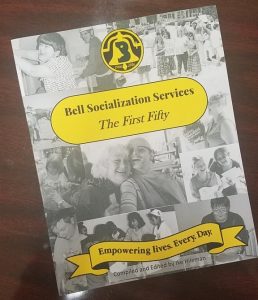From the Beginning
On October 31, 1963, President John F. Kennedy signed into law the Community Mental Health Act (also known as the Mental Retardation and Community Mental Health Centers Construction Act of 1963), which drastically altered the delivery of mental health services and inspired a new era of optimism in mental healthcare. This law led to the establishment of comprehensive community mental health centers throughout the country. It helped people with mental illnesses who were “warehoused” in hospitals and institutions move back into their communities.
Along with this law, the development of more effective psychotropic medications and new approaches to psychotherapy made community-based care for people with mental illnesses a feasible solution. A growing body of evidence at that time demonstrated that mental illnesses could be treated more effectively and in a more cost-effective manner in community settings than in traditional psychiatric hospitals.
Meanwhile in York, PA
- In December of 1965 the York Jaycees voted to finance the Social Club of the Mental Health Association and contribute volunteer services. At that time the Mental Health Association was going to the Harrisburg State Hospital on a monthly basis to provide social parties for residents.
- In March of 1966, at a joint meeting of the two organizations, it was agreed to register the existing Bell Committee as The Bell Club (see “Why a bell?“)
- Jaycee Wives present a $1,200 check to be used for possible equipment and materials. The first program meets at Pine Street Center and the programs routinely serve 14 referrals.
Support grows.
- By 1967 the Jewish War Veterans Auxiliary and Catholic Women’s Club of York also agree to supply regular volunteers. The Psychology Club of York Junior College and Beta Sigma Pi volunteer. Refreshments will be made by volunteers rather than be purchased. With 33 referrals, members are attending regularly and ceramics and other craft activities are being offered.
- Harrisburg State Hospital, in December of 1969, reports it will be bringing clients to the York program beginning in the new year.
First employees
- Rev. George Knarr agrees to accept the job as Director of Bell Club on a temporary basis, being paid $75 per month. Treasury balance is $605. St. Paul’s Lutheran Church, Springettsbury Avenue, becomes meeting location for the York program. (The program operates there for the next 30 years.)
- Mailing list grows to forty individuals. Representatives from Harrisburg State Hospital continue bringing five patients to Bell Club each week; there are 294 York Countians at Harrisburg State Hospital.
- In February of 1972, Rev. Knarr reports funding and referral problems. Sunday Supper Program begins with the first dinner hosted by a church in Hallam.
- Adrienne Coulson assumes the job as Interim Director in June and works to establish a formal Board of Directors.
Beyond socialization
- Ms. Coulson indicates to the Board concerns about living conditions of MH persons in the community.
- Monthly visitations to the various MH boarding homes are initiated. In November of 1972, Bell is awarded $3,200 from MH/MR. Funding through MH/MR is later denied, and by voice vote, the MHA brings Bell Club back under its auspices for a short period of time.
- Community-based funding is actively sought. The Soroptimist Club and Farm Women’s Society respond and a first fundraiser, “Dancing to the Decades,” is sponsored by MHA to benefit Bell at the cost of $2.50/person. Ms. Coulson diligently focuses on the need to rejuvenate fiscal support and fulfill requests for volunteers to help at programs.
- Rabbi Emmanuel Kramer, Dr. Robert Lease, Jr., Rob Stephenson, and others provide leadership; Mr. Robert Russell volunteers to serve as Treasurer. With $377 in the treasury, a meeting with County Commissioner Charles Stine is scheduled to discuss funding.
- Pat Flinchbaugh is introduced as the first agency Administrative Assistant in June 1974. The Walk-In Center is opened in the Fall at 31 N Duke Street, and the Young Women’s Club of York agrees to provide furnishings. Just before Thanksgiving the agency is formally incorporated as the Bell Club, Inc.
- In succeeding years, the Board is expanded to include four members from MHA, four from the prime volunteer support organizations, two Bell Club consumers and two members at large. Previously part-time, Director Adrienne Coulson has her hours increased to 40/week.
- With the addition of a Hanover program in January 1975, two members join the Board to represent Hanover and the at-large category is expanded to six, with at least one Jaycee member. Eighteen members now comprise the Board.
- In June of 1975 a historic $14,900 is budgeted from MH/MR for 1975-76. It is reported that 133 people have participated in York and Hanover programs, for a total individual attendance record of nearly 1,400.
 To read more on the history of Bell, consider purchasing* a copy of “Bell Socialization Services – The First Fifty,” a compilation by Ivan “Ike” G. Hileman, who retired as Bell’s executive director in 2017 after 40 years of service. Submit a request via the Contact page.
To read more on the history of Bell, consider purchasing* a copy of “Bell Socialization Services – The First Fifty,” a compilation by Ivan “Ike” G. Hileman, who retired as Bell’s executive director in 2017 after 40 years of service. Submit a request via the Contact page.
*$20 donation to Bell. Quantities are limited.